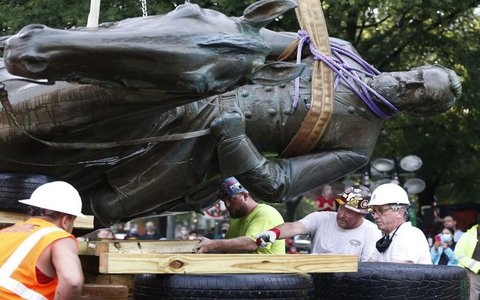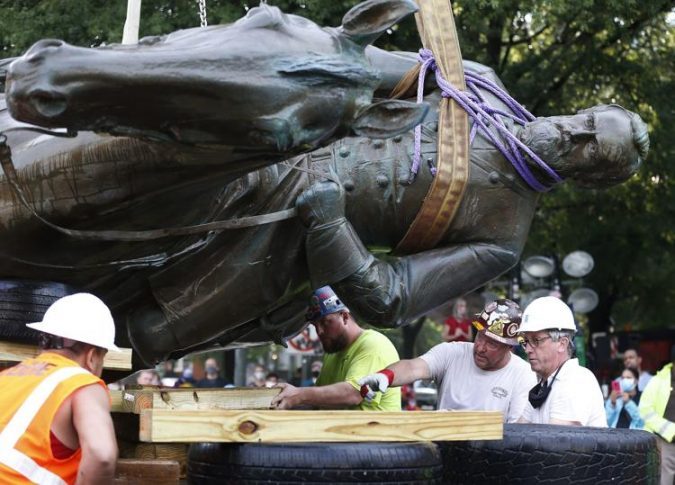In Denton, Texas, 1,300 miles away from where a crowd was gathered to watch the removal of the Stonewall Jackson statue in Richmond, Virginia, Jackson’s great-great-grandson’s phone was buzzing with text messages from friends watching workers saw off the base of the statue.
“I’m very much cheering on from afar,” said William Jackson “Jack” Christian, a lecturer in the English department at the University of North Texas who was home with his 3-week-old daughter on Wednesday when he heard the news. “I think removing racist imagery and symbols – whether it’s statues or a Confederate flag or school names – is a first step toward addressing a racist past and hopefully enacting a more just future.”
Christian, 41, said he was raised in Bon Air with both “reverence and skepticism” for his namesake. He was taught that Jackson committed good deeds, such as educating enslaved people in violation of state law. As an adult, his views sharpened.
“He still had a white supremacist viewpoint that he went to war to protect,” Christian said.
He and his brother wrote Richmond Mayor Levar Stoney asking for the monuments to come down in 2017 after a white supremacist plowed into a crowd in Charlottesville, killing Heather Heyer. The man had come to protest against the removal of a prominent Confederate monument in the city’s downtown.
“I noticed that when people of color or women have voiced the opinions we voiced, they face far more criticism,” he said of the response to their call for action. “I think we definitely felt like we had a responsibility to say something, but it was also part of our privilege to get to say something; to weigh in as opposed to just being outraged.”
Christian said he hopes no public money is spent displaying and contextualizing the piece. He credited steady activism and a wave of recent protests with pushing officials to a decision.
“I would be happy with [the statue] being locked away and not displayed anywhere,” he said. “I don’t think it can be a symbol for everybody.”




